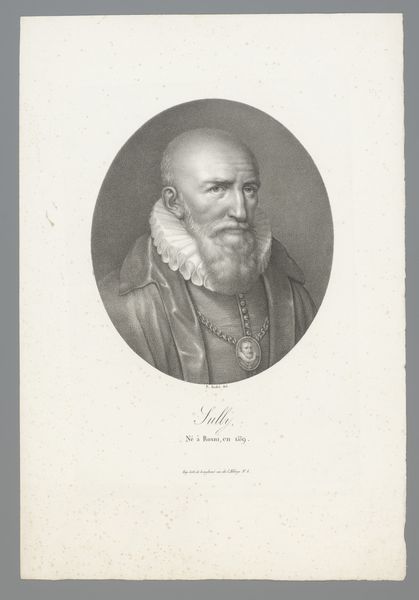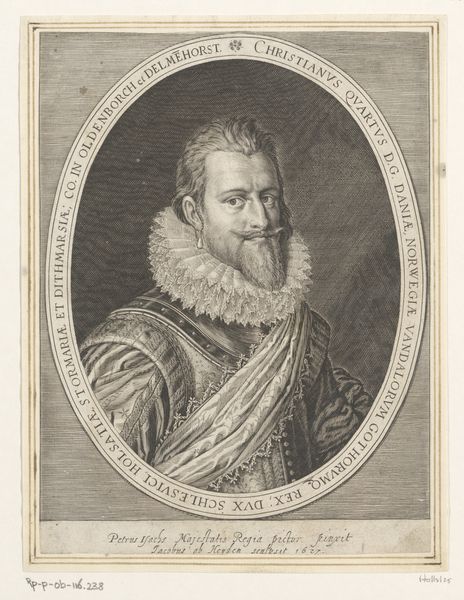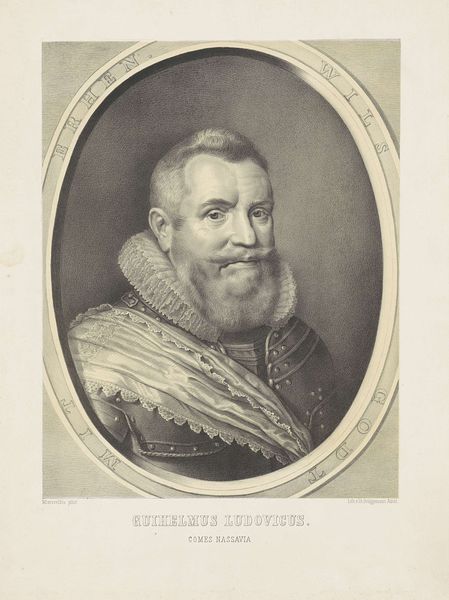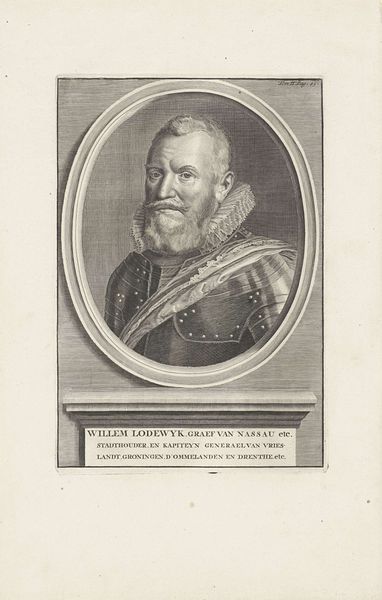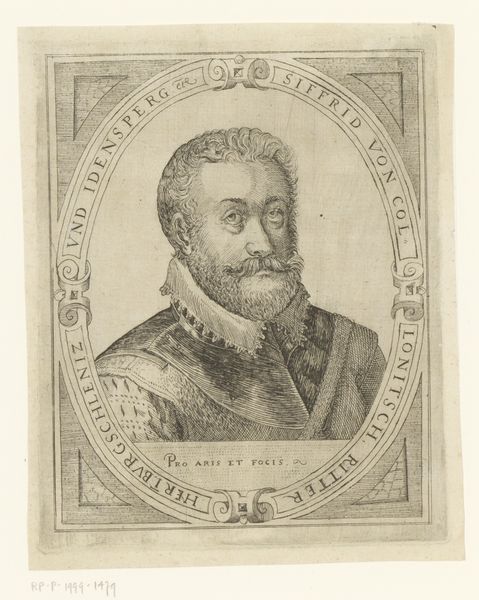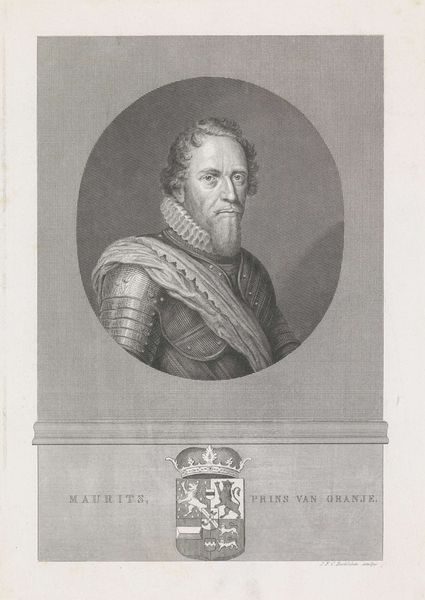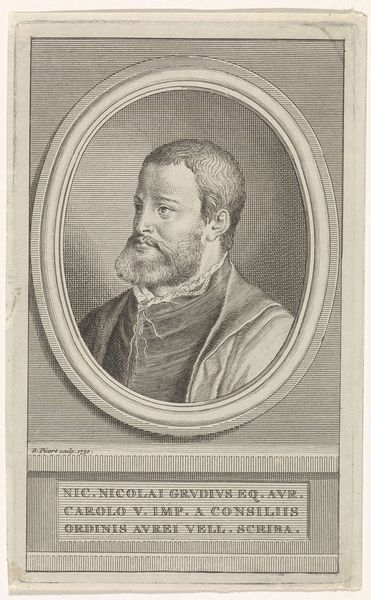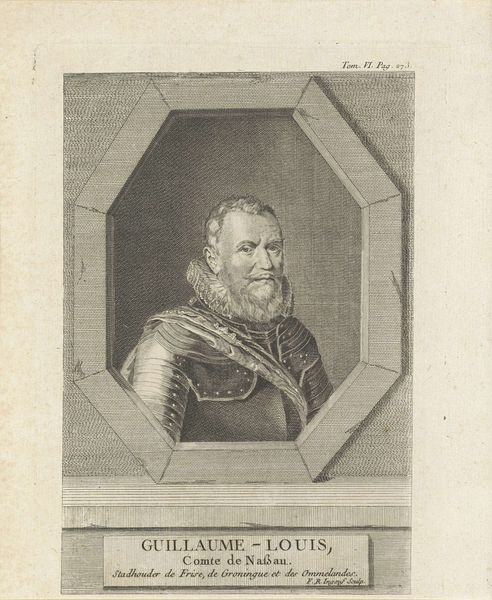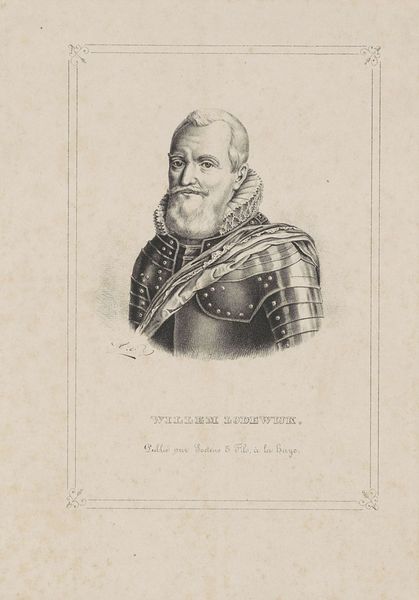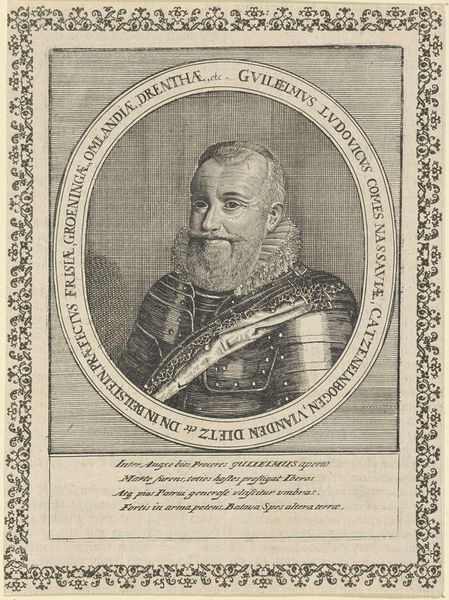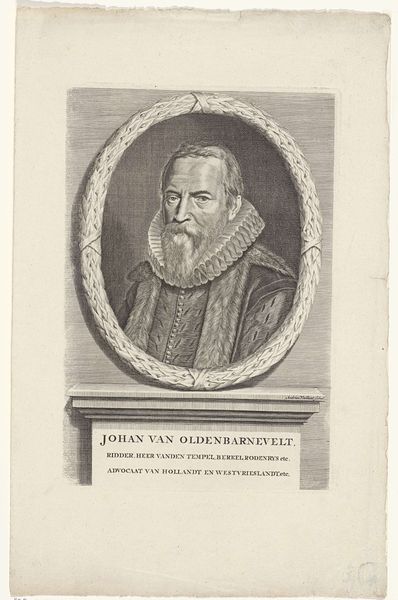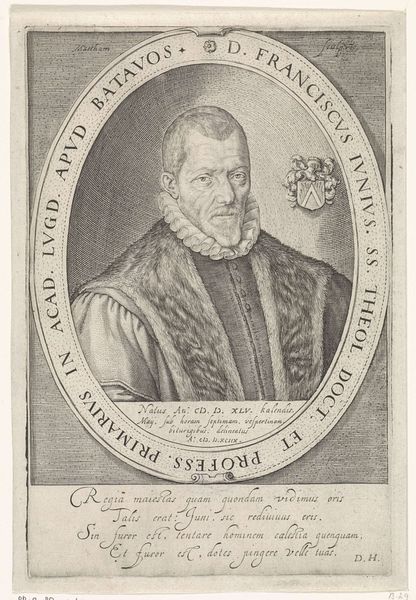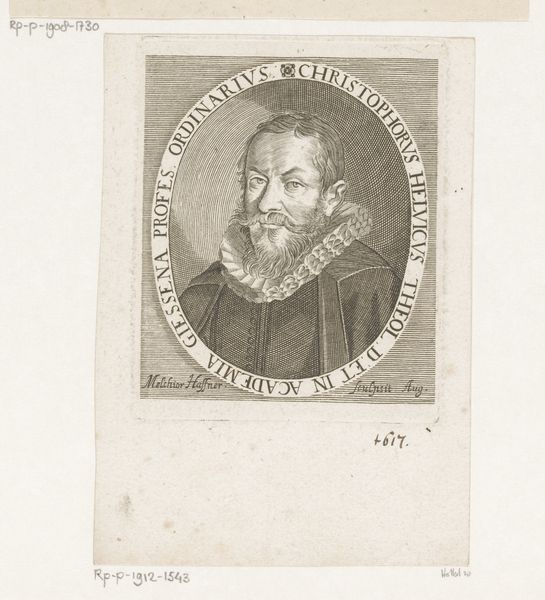
Portret van Willem Lodewijk, graaf van Nassau-Dillenburg 1827 - 1927
0:00
0:00
carelchristiaanantonylast
Rijksmuseum
Dimensions: height 200 mm, width 161 mm
Copyright: Rijks Museum: Open Domain
Curator: The Rijksmuseum holds in its collection a portrait, made as a print during the period spanning from 1827 to 1927, of Willem Lodewijk, Count of Nassau-Dillenburg. Editor: Immediately striking is the graphic quality, all executed in these tight, controlled lines. He's quite stern-looking. It's a powerful image rendered with such delicate application of lines and contrasts. Curator: This falls within the era of neoclassicism and takes the form of a history painting presented in the style of a portrait. Let’s delve into its historical context, bearing in mind its creation falls long after Willem Lodewijk's time. Consider how the intervening centuries might have shaped his portrayal. Editor: I observe a very clear organization to the composition. The portrait is tightly cropped within its oval frame, creating a strong sense of containment. Look at how the curve echoes through the text above the sitter’s head and along the bottom edge where his signature rests, mirroring the structure in lettering too. Curator: Precisely. Consider the evolution of Dutch identity and nationalism in the 19th century. Images of historical figures served a crucial function. Prints like this one helped construct and disseminate national heroes, Willem Lodewijk included. The clean lines and stark contrasts echo an idealized past. Editor: Yes. And I also want to call attention to the high contrast between the dark armor and the light ruff around his neck, and beard. These strong tonal shifts sculpt his features. Note the subtle play of light on his face, created by the layering of lines. This highlights an intense realism as it emerges. Curator: Moreover, examine the inscriptions at the top: “Wils Godt Mit Ehren,” a testament to the religious fervor characteristic of that era. Consider how Willem Lodewijk, as a key military leader during the Dutch Revolt, came to be seen as a figure of divine providence in the struggle for independence. This detail provides important narrative depth. Editor: Looking closely at those areas, notice how the artist meticulously controls the density and direction of lines to convey a profound three-dimensionality despite the medium’s flat nature. I love the textures being conjured through ink. Curator: Exactly. The act of disseminating such images shaped public memory. In viewing this portrait today, one must confront this duality, and recognize the ways history painting and portraiture have served nationalist and cultural ambitions through reproductive technologies such as the print. Editor: A poignant image which at first viewing, seems simplistic in its clarity, however a second look reveals layers of intent in its composition and craft, providing insight to a far more complex era in artmaking. Curator: I concur. We must consider both the aesthetic values and the cultural agenda embedded within this seemingly simple portrayal. A fascinating piece to ponder!
Comments
No comments
Be the first to comment and join the conversation on the ultimate creative platform.
